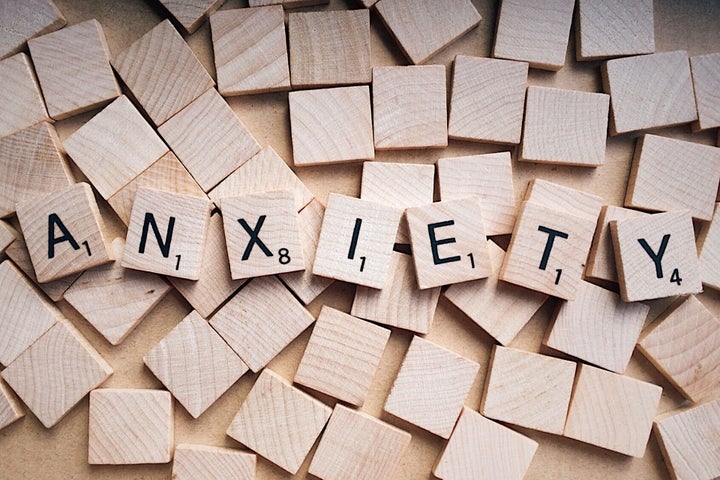
Being nervous or fearful is a normal human emotion for all of us at certain times. No one - whether 18 or 80 - can honestly say that they haven’t felt that familiar anxious feeling in the pit of their stomach on the first day of school, or before doing an important presentation at work. Fear is a perfectly healthy and normal emotion when it is controlled – it is the brain’s fight or flight system reacting to perceived danger.
When does anxiety become a problem?
Rates of anxiety in children and young people have been rising steadily over recent decades. Whether this is due to greater understanding, and therefore diagnosis, or a response to increased pressure and stress levels, is a subject hotly debated.
However, the fact of increased diagnosis does not necessarily mean that sufferers are getting appropriate and effective treatment – if any at all!
It is estimated that 10 to 20% of children will suffer from an anxiety disorder by the age of 18. It is the most common mental health issue amongst young people.
Despite this alarming statistic, 70% of young people do not receive appropriate interventions at a sufficiently early age.
So it seems that, despite government promises of delivering over £300 million towards mental health care for young people, there are still many young people falling through the net. Still only 5.5% of the overall health budget is spent on mental health for both adults and children combined.
This is additionally worrying, as countless of studies have shown the clear link between mental health in childhood persevering into adulthood. It is estimated that 50% of mental health problems are established by age 14 and 75% by age 24.
Can we stop anxiety before it begins?
Whilst there is clearly a need for more clinical support and intervention when a child is suffering with an anxiety disorder, is there anything that parents or teachers can do? Can we stop anxiety before it reaches the stage of needing professional help?
There is an element of misunderstanding what amount of fear, worrying or nerves are ‘normal’, as opposed to what could be considered as anxiety. For example, nerves before an exam or on the first day of school are a ‘normal’ reaction to a new situation, where as if a child was feeling like this everyday, this might be considered anxiety, or a sign of a more serious problem such as bullying.
Being able to tackle anxiety before it takes over, is perhaps one of the most important things we can do for children and young people to stop it developing into a life long condition.
Here are some of the top tips, supported by mental health professionals, for helping to manage anxiety:
1) Allow them to feel anxious
This may seem counterintuitive, but telling a child that they shouldn’t be feeling anxious, or that ”there’s nothing to feel anxious about”, doesn’t usually do much to stop the worrying. Rather than trying to block the feeling, reassure them that it is okay to feel anxious sometimes, and once they’ve calmed down, work with them to formulate a plan on how they can manage this anxiety.
2) Make time to talk about it (and listen!)
When a child is feeling fearful, they may react to questioning defensively and becoming irrationally angry or aggressive. Making time to listen to how they’re feeling (even if its difficult at first) goes a long way to relieving the burden they may be carrying around.
Gentle and open questioning is the best way of encouraging them to open up. Try this whilst doing an activity such as baking a cake, or going for a walk, to take the pressure off.
It can be easy to rationalise problems away with our adult minds, but try to put yourself in their situation. Anxiety isn’t always logical and what may sound trivial to you could be creating a great deal of fear in their mind. Listen empathetically, showing that you understand and support them. Whilst you are not agreeing that their anxieties are founded, you show that you understand, and support them, and most importantly that you are on their side.
3) Don’t avoid anxiety- provoking situations
Although it can be tempting to avoid anxiety-provoking situations, avoiding these situations will only give credibility to their fears, and won’t equip them with how to deal with anxiety in the future. Usually levels of anxiety reduce within 20-45 minutes if you stay in the anxiety-provoking situation, so teaching a child that their worst-case scenario will not occur can be a valuable tool for their future.
Depending on the age of the child, you could also try thought challenging exercises such as used within cognitive behavioural therapy (CBT). CBT is the most commonly used therapy to treat children and adults with anxiety, and involves the process of understanding how your thoughts affect your behaviour, and how we can break negative thought patterns. Learning the basics of this thought challenging approach whilst they are young may also help the child to deal with emotionally challenging situations in their future.
4) Practice Mindfulness and Relaxation
When we are anxious, the body has a physical reaction - our heart speeds up, our breathing rate increases, and our muscles become tense. These physical symptoms can be self-perpetuating causing us to feel more anxious and lead to troubles sleeping and relaxing. Practicing 20 minutes of mindful relaxation every day – including deep breathing, and relaxation exercises can help to quieten a busy mind. Once the body is more relaxed and the heart rate has dropped, we are able to think more clearly and calmly.
These tips are preventative in nature and intended for mild to moderate anxiety. If you are concerned that a child or young person you know has an anxiety disorder professional medical advice should be sought.